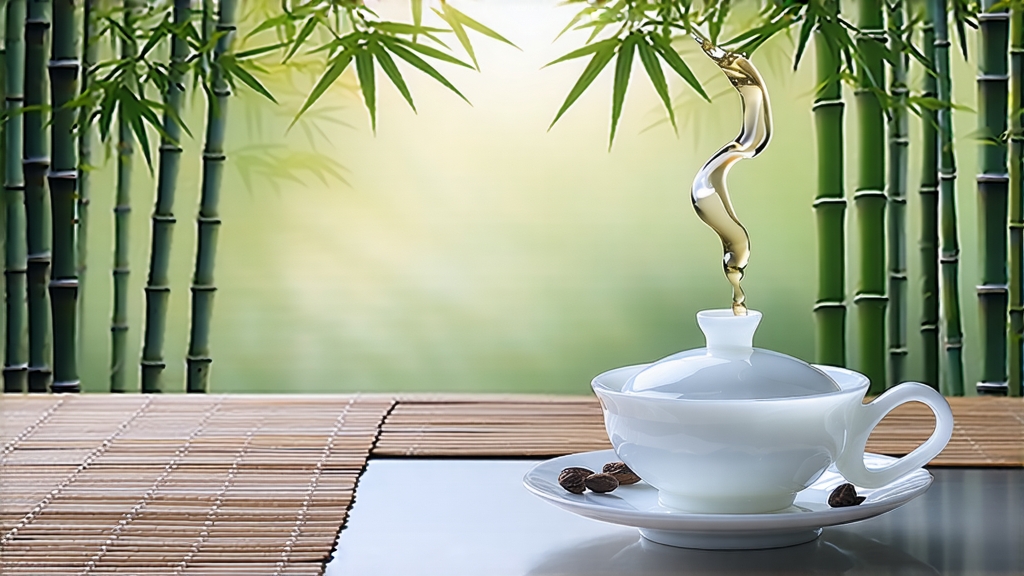
When early March fog still clings to the Wuyi foothills of northern Fujian, tea pickers rise before the temple bells. They climb terraced gardens where the famous Da Bai cultivar has slept through winter, its dormant buds swelling with the first kiss of southern warmth. By law and by lore, only the unopened leaf shoot—still sheathed in silvery down—may become Bai Hao Yin Zhen, the “Silver Needle” that emperors once hoarded as liquid jade.
A Brief, Glittering Past
White tea is the youngest of China’s six great tea families, yet its pedigree reaches back to the late Song dynasty. Imperial annals from 1064 CE record “white medicine tea” presented to Emperor Renzong; scholars believe this was an ancestor of Yin Zhen. During the Qing, European merchants docking at Fuzhou traded Silver Needle for sapphires, spreading its fame to Russian courts where aristocrats sipped it from paper-thin crystal. Revolution, war and trade embargoes nearly erased the craft, but three state-owned factories guarded the seed libraries and withering rooms. When China reopened in the 1980s, a handful of master witherers revived the tradition; today fewer than 600 families possess the hereditary license to produce authentic Fuding Yin Zhen.
Micro-terroir: Where the Down is Born
Authentic Bai Hao Yin Zhen comes from two micro-zones: Fuding county’s Taimu mountain range and Zhenghe county’s high bamboo corridors. Taimu’s granitic soils drain quickly, forcing roots to dive three metres for minerals; the stress concentrates amino acids, especially L-theanine, giving a brothy umami later released in the cup. Zhenghe sits 300 m higher; cooler nights slow oxidation, preserving the violet-like aldehydes that create Yin Zhen’s signature orchid aroma. Between the two areas lies a 17-kilometre mist belt where humidity hovers at 85 %; here the tea’s trademark “white down” grows longest, refracting light like frost on a spider’s web.
The Harvest Code: Dawn, Dexterity & Silence
Plucking begins when the morning thermometer reads 14–18 °C and relative humidity tops 80 %. Pickers—mostly women who inherit fingertip calluses from their grandmothers—use a twisting snap that keeps the bud intact yet severs the tiny stem. A full basket holds only 250 g; ten baskets yield a single kilogram of finished tea. Conversation is discouraged: talking releases carbon dioxide that accelerates enzymatic browning. By 9 a.m. the sun grows too strong, ending the day’s harvest. Anything picked later is diverted to lower-grade white teas such as Gong Mei or Shou Mei.
Withering: The Invisible Dance
Unlike green tea’s kill-green wok roast, white tea is defined by what it does not receive—heat, rolling or compression. Instead, the buds undergo a 48- to 60-hour duet of moisture loss and gentle oxidation. Traditionally, bamboo trays are laid in a ventilated loft where mountain cross-breezes carry the scent of camphor and pine. The witherer’s art lies in reading the air: if the breeze is too strong, the bud’s outer shell dries before the stem, causing “green heart” astringency; too still and the tea “sulks,” developing a hay-like staleness. Every two hours the trays are rotated like sundials, ensuring even exposure. Near the end, the master lifts a bud to the ear and bends it; a faint crack like breaking chocolate tells him the moisture has fallen to 8 %—the magic number.
Modern climate-controlled rooms replicate the loft environment at 26 °C and 65 % humidity, yet connoisseurs swear the mountain breeze adds a note impossible to synthesize. Recent GC-MS analysis backs them up: traditional withered Yin Zhen shows 23 % higher trans-2-hexenal, the compound tied to fresh-cut grass and mountain air.
Firing: A Whisper of Heat
A final 20-minute “foot fire” at 40 °C halts oxidation without caramelising sugars. Pinewood charcoal is preferred; its far-infrared rays drive off the last moisture while imparting trace creosol that deepens the finish. The tea is then rested for thirty days in linen-lined earthen jars so the remaining 2 % moisture migrates evenly, stabilising flavour.
Grading the Needles